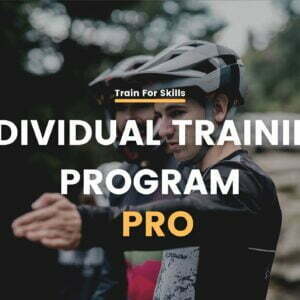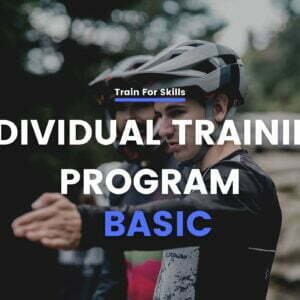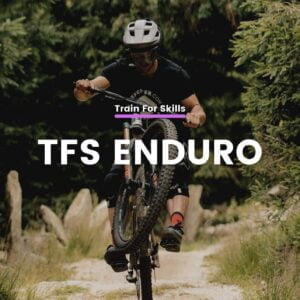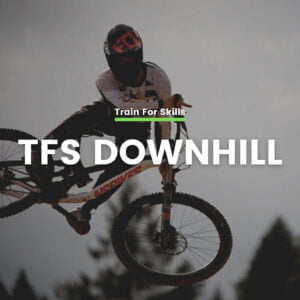What is the most boring, seemingly easiest time of the season ? Winter, the popular off-season. Long, slow rides, a lot of time spent on the road, gravel or trainer and in the gym. And in your mind only riding at bikeparks all day long… But this is the most important period of the season (after the competitions of course)! Your aerobic base determines your results in the middle of the season, and now its building is taking place, which after all is to be the next best thing! How should the training look like in the preparation period? In today’s article something about it.
Aerobic Base
You have probably met with this term many times. The aerobic base is actually a well-developed aerobic/aerobic system. It is working up to 70% of your maximum effort intensity where your speed is even, relatively speaking. Ross Edgley in his books describes this as ‘cruise speed’, which is a pace that we are able to maintain for a long time. The more trained we are the longer our body runs ‘in oxygen’ before it starts to switch to an oxygen free system.
This is the moment when we are no longer able to pronounce a full sentence. This limit is individual for each person, depending on the level of training or genetic predisposition. A solid base means that during long days on a bike or a few days of competition we will be able to achieve higher results. And our body will be more rested in comparison to a person with a less developed base.

Benefits Physiologically:
- Increased capillary density, which increases the efficiency of oxygen and nutrient delivery to tissues
- Increased maximal aerobic power (VO2max)
- Increasing cardiac minute volume
- Increasing oxygen exchange in the lungs
- Decreased submaximal breathing rate
- Increased number of type I (slow-contracting) fibers
- Increased mitochondrial density and size
- Increased blood flow through working muscles
- Increased muscle endurance
- Decreased submaximal heart rate, resting heart rate and resting blood pressure
Fitness factors
Joe Friel, in his cycling methodology, distinguishes three following concepts that are factors of our fitness. They are the ones that determine to a large extent our body’s abilities. With knowledge of these we can better understand our body and our own abilities or state of training.
- VO2max – maximum aerobic power – it is a genetically conditioned ability and at some point we can’t raise it any higher. It defines the maximum oxygen uptake that the body can take in a unit of time. It can only be measured by performance tests, using an ergospirometer – a mask that covers the mouth and the night, connected to a measuring device. It is usually expressed in ml/kg/min. The best athletes achieve values between 70-80ml/kg/min, average people around 40-50ml/kg/min. In women these values are lower by ~10%. VO2max is increased by exercising at a level of 90-100% VO2max (93-100% of maximum heart rate, zone 5 HR or also very intensive efforts in zone 6-7 power).
- Lactate Threshold (LT) is a training intensity level above which lactic acid rapidly accumulates in the blood. Its level rises above the resting level. You know that characteristic burning sensation in your legs? This is the moment. Its value is also determined in the laboratory, but it can also be determined through road tests (less precisely, of course). It is usually defined as a percentage of VO2max or HRmax. Compared to VO2max, it is not genetically dictated (only some people may have a greater ability to tolerate pain – psychologically). Therefore, it is a better indicator of our capabilities.
- Economy of movement – this is simply how much energy we use to produce a given power output. How much fuel=energy do we need. Economy of motion is strongly related to technical skill. The better the quality of movement, the less energy we use, thus having more energy in reserve, i.e. better endurance. By working on bike control, efficient pedaling and our technique we will improve it.
An example comparison of two riders:
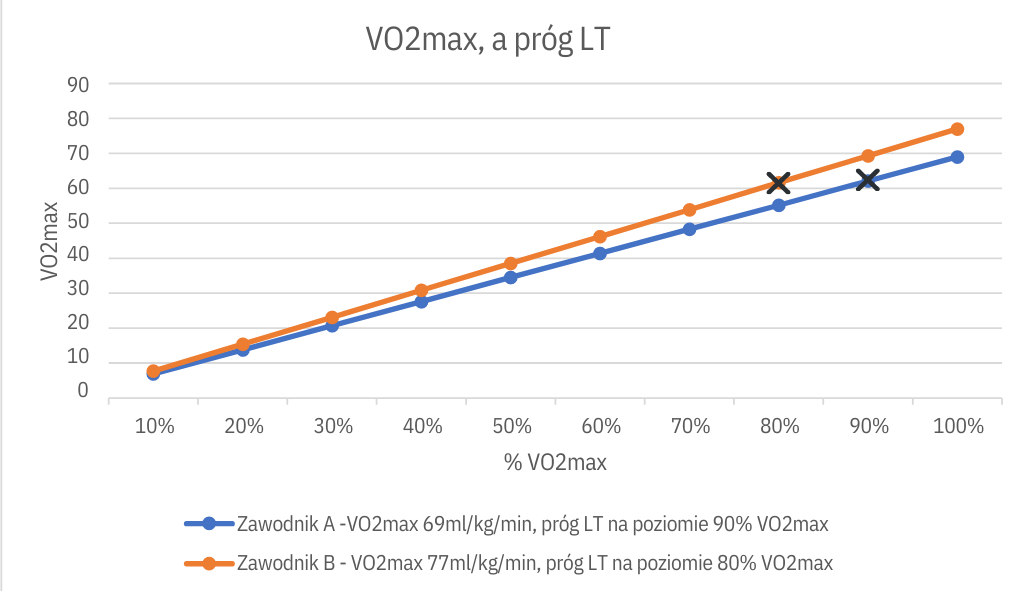
Practical solutions
As you can see the above concepts tell us a lot, but in practice they are difficult to apply in training. There are many different thresholds defining our abilities, methods of measuring them and ways of measuring our progress. Each differs depending on its author. Below are the thresholds we typically use when working with TFS mentees. Once you’ve set them, you’ll be able to train according to the zones (about which more in the previous article) and measure your progress going forward.
- FTP – Functional Threshold Power – it was formulated by Dr. A. Coggan. The assumption is that a trained athlete is able to maintain a certain maximum level of effort at a constant intensity for 60 minutes. Based on its values we set specific training zones. You can perform the test on your own on the bike, the condition is to have a power meter.
- FTHR – Functional Threshold Heart Rate – is the equivalent of FTP, only that it provides us with the data on heart rate, not power. To determine the threshold it is enough to have only a heart rate measurement (preferably on the chest).
- MAS – Maximal Aerobic Speed – this is the maximum average speed you can maintain for 5 minutes. It is calculated by dividing the distance covered in 5min by 300s, for example 1500m/300s=>MAS=5m/s
- CP0,2/1/5/30/… – “Critical Power” this term is used by Friel in his Cycling Bible series to describe the maximum power for a given time interval that an athlete is able to generate. CP0.2 means 12s, CP1 means 60s, CP5 means 300s, etc. Based on the determination of the individual intervals, we can determine the so-called peak power profile for a given athlete. It is helpful in determining the level of preparation and readiness of an athlete for a given discipline.
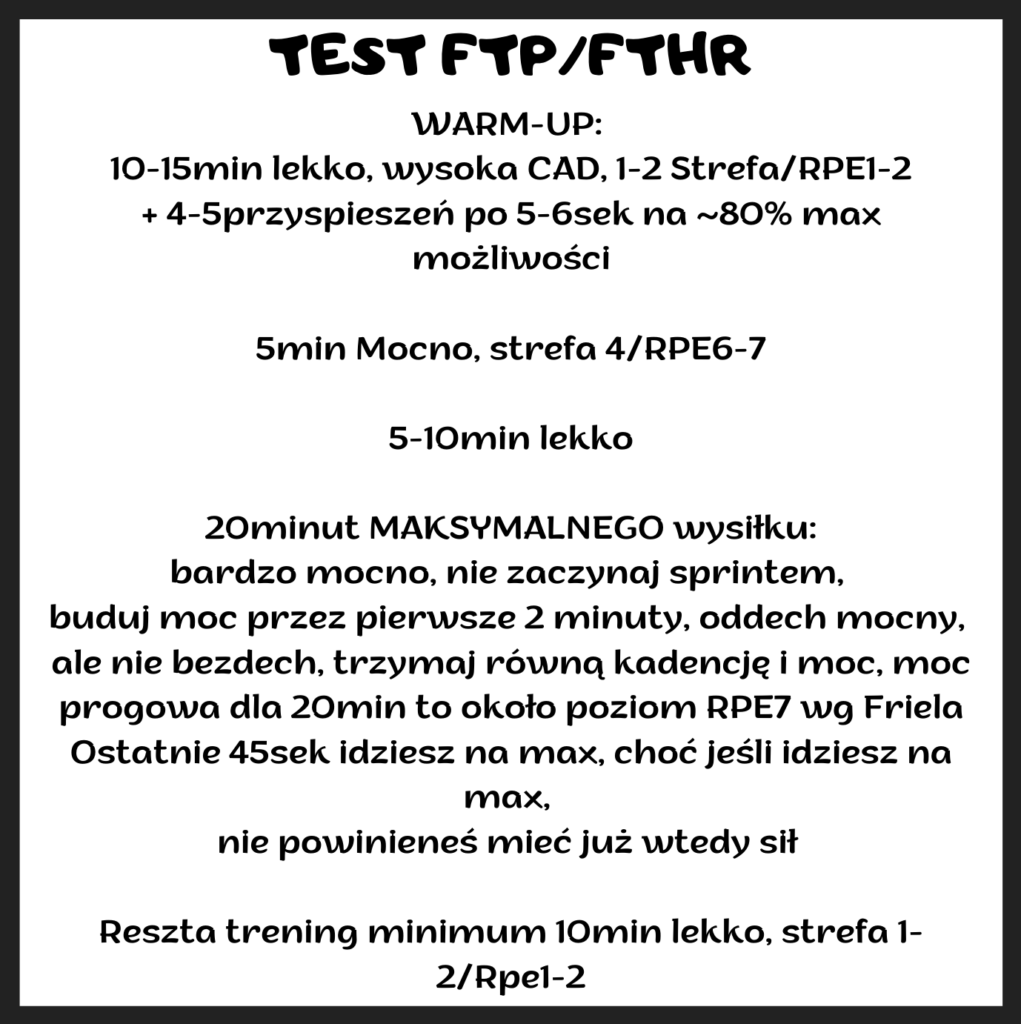
Endurance Periodization – Aerobic Baseline
Each training year (after the transition period) starts very similarly. Both Bompa, Buzzichielli as well as Friel or Edgley describe it exactly the same. During the general preparation period, the focus is on building the foundation, developing the basic qualities. For beginner and amateur athletes this will be mainly aerobic endurance and strength (in the gym) and technical exercises on the bike.
In the case of advanced athletes, in whom the aerobic base is developed at a high level it is common practice to focus in this period on other factors limiting their abilities, while maintaining general fitness. The general principle that should be followed is: first the volume of work (work capacity), then its intensity. Therefore, at the end of the base period, the volume should reach its maximum.

Methods
There are many methods of building endurance. In the first blog of the endurance building series @artur-hryszko highlighted 3 of them. As a reminder: continuous method, intermittent method and tests, competitions.
Continuous methods:
Continuous – Steady State Cardio (SSC) or Long Slow Distance (LSD) in oxygen. Such a workout can last anywhere from 10 to 120min. Of course, longer road trips, e.g. a loose 100 with friends will also work great (i.e. efforts up to 6h). But such long workouts cannot occur too often. In Enduro/Dh a better idea would be a whole day at a local place to build up the volume.

- Variable intensity – “Fartlek” – a steady S2-3 ride interspersed with spontaneous accelerations (or intensity increases due to the terrain). This is particularly useful during the preparation period. As Bompa and Haff mention, the workload is not high, but the subjective feeling of effort is important.
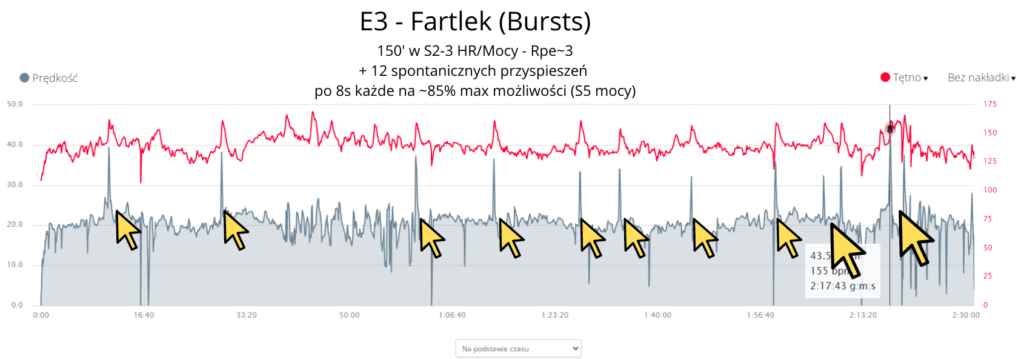
- Continuous, constant-pace – This is a shorter aerobic endurance workout at S3 of heart rate, usually used at the end of the general preparation period. It is based on a steady steady ride for 45-75min preceded by a warm up and cool down at the end.

Interval methods:
Interval – long tempo intervals. This is actually advanced aerobic endurance training – as Friel says in his book. We use it towards the end of building an aerobic base. It is based on 20-minute repetitions at an intensity close to FTP/FTHR – the so-called Sweet-Spot. As a first training of this type we can start with e.g. 2/3×15′, 3’75″RI @87-90%FTHR/85-90%FTP, and then move to 2/3/4×20′, 5’RI @85-94%FTHR/80-90%FTP.
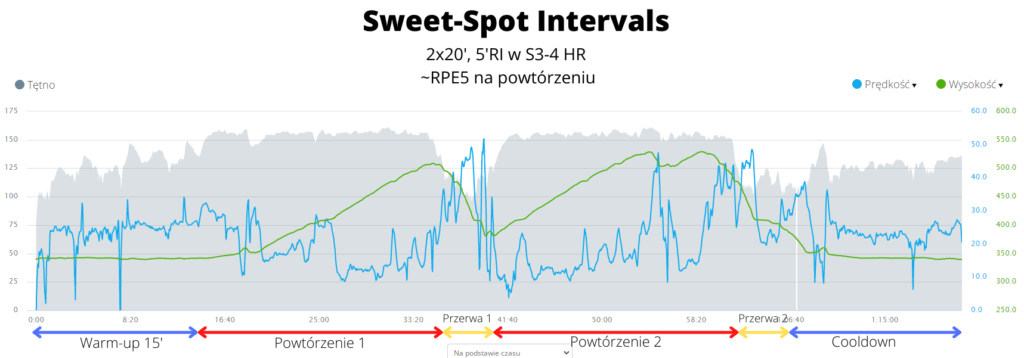

It’s worth mentioning that there are many methods of training such as Polarized Training, Block Periodization or Sweet Spot Training. Above I describe the classic approach, most often used when working with amateurs. When working with professional athletes we need a more advanced approach. Such people already have a strongly developed base. That’s why it is more important for them to change the intensity and manipulate the appropriate factors.
When our aerobic base is solidly formed we can move on to working on higher intensities. How will it look like? More about it in the next article.
PS. Use the code “START” and receive 10% off your first month on the TFS Enduro or TFS Downhill program.
Reference:
- Power meter training manual, J.Friel, 2014
- The Mountain Biker’s Training Bible, J.Friel, 2010
- Periodization Training For Sports, T. Bompa, C. Buzzichelli
- The Art of Resilence, Ross Edgley, 2020
- Blueprint: Build a Bulletproof Body for Extreme Adventure in 365 Days, R. Edgley, 2021
- Cycling. A recipe for physical and mental training, Jarosław Michałowski, 2021

